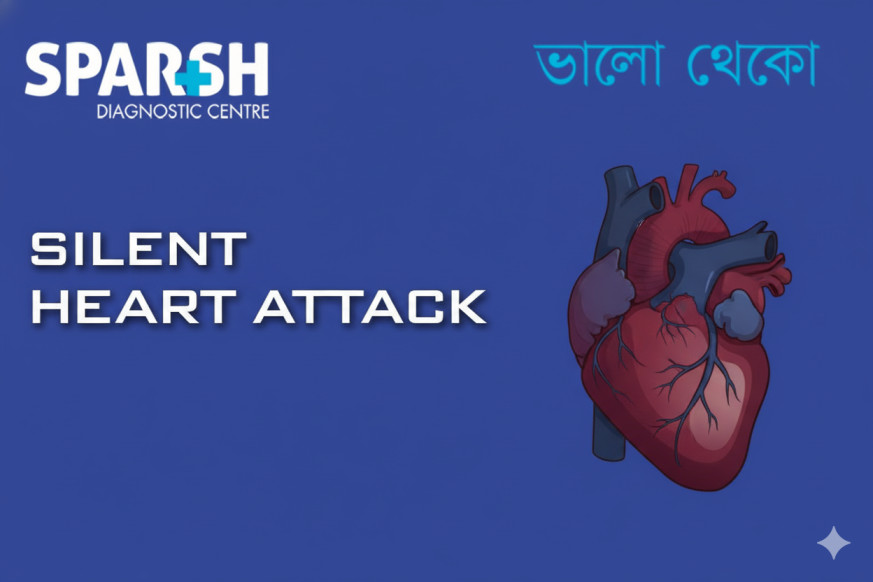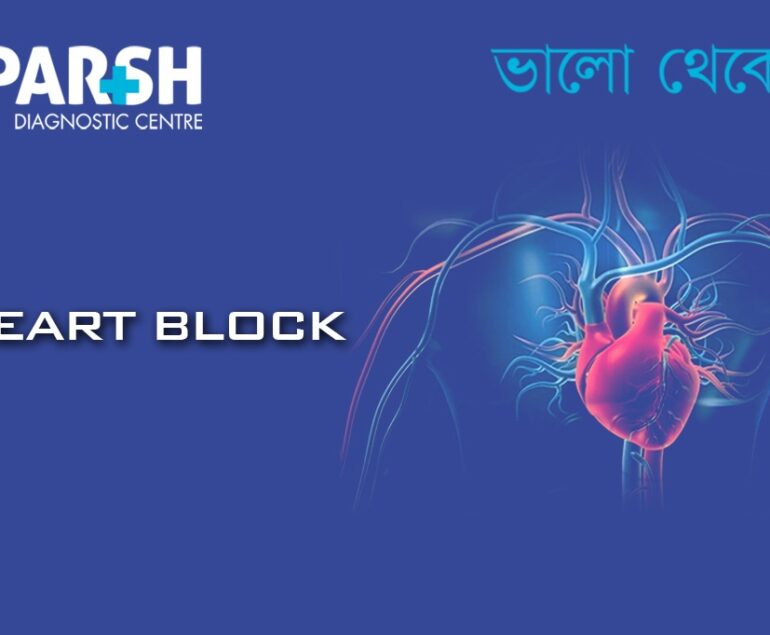When we think of a heart attack, we imagine severe chest pain, sweating, and breathlessness — the kind that sends people rushing to the hospital. But what if a heart attack happens quietly, without the typical warning signs? That’s what doctors call a silent heart attack, or a silent myocardial infarction (SMI).
A silent heart attack occurs when blood flow to a part of the heart is blocked, damaging the heart muscle — yet the person doesn’t feel intense symptoms or may mistake them for mild discomfort. Because of its subtle nature, many people only discover they had one during a routine ECG or heart screening.
According to studies, up to 45% of all heart attacks are silent. This makes awareness crucial — understanding the symptoms and risk factors can help save lives.
What Is a Silent Heart Attack?
A silent heart attack is a type of heart attack that occurs with few or no noticeable symptoms. Like a typical heart attack, it results from reduced blood flow to the heart muscle, usually due to coronary artery blockage caused by plaque buildup (atherosclerosis).
However, in this case, the usual red flags — like crushing chest pain — are either absent or so mild that people dismiss them as indigestion, fatigue, or a muscle strain.
Symptoms of a Silent Heart Attack
Unlike typical heart attacks, the symptoms of a silent heart attack can be vague, mild, or easily overlooked. Common signs include:
Mild chest discomfort (pressure, tightness, or fullness that comes and goes)
Discomfort in the jaw, neck, back, or arms
Lightheadedness or dizziness
Cold sweat or clammy skin
Nausea or heartburn-like sensation
Because these symptoms can mimic other conditions, people often ignore or misinterpret them — delaying medical attention and increasing the risk of complications.
Why Is It Called “Silent”?
A silent heart attack is called “silent” because the symptoms are:
Mild or atypical — they don’t fit the classic chest-pain scenario.
Gradual or fleeting — they can come and go, so people don’t suspect a heart issue.
Overlapped with other issues — like acid reflux, anxiety, or fatigue.
Masked by other health conditions — especially in people with diabetes or neuropathy, where nerve damage dulls pain perception.
Who Is at Risk of a Silent Heart Attack?
While anyone can experience a silent heart attack, certain groups are more vulnerable:
1. People with Diabetes
Nerve damage caused by diabetes (diabetic neuropathy) can blunt pain signals, making it hard to feel chest discomfort.
2. Older Adults
Elderly individuals often have multiple health conditions and may attribute symptoms to aging or fatigue.
3. Women
Women tend to experience less typical heart attack symptoms — such as fatigue, nausea, or back pain — which can be mistaken for minor issues.
4. Smokers
Smoking damages blood vessels and accelerates plaque buildup, increasing the risk of silent heart events.
5. People with High Blood Pressure or High Cholesterol
Both conditions silently damage arteries over time, setting the stage for blocked coronary vessels.
6. People with a Family History of Heart Disease
A genetic predisposition significantly raises the likelihood of both silent and symptomatic heart attacks.
How Is a Silent Heart Attack Diagnosed?
Since symptoms are often missed, silent heart attacks are commonly discovered after the event during medical check-ups or diagnostic tests.
Common diagnostic methods include:
1. Electrocardiogram (ECG)
Records electrical activity of the heart. A silent heart attack may show old damage patterns (Q waves or ST changes) even if the person felt fine.
2. Echocardiogram (ECHO)
Uses ultrasound to visualize heart movement. It can show areas of the heart that don’t contract properly, indicating previous damage.
3. Cardiac Enzymes (Troponin Test)
If detected soon after a silent event, elevated troponin levels can reveal heart muscle injury.
4. Stress Test
Assesses how the heart performs under exertion. Abnormalities can hint at previous or ongoing heart damage.
5. Coronary Angiography
An imaging test that visualizes blocked arteries and assesses blood flow to the heart muscle.
Causes and Risk Factors
Silent heart attacks share the same underlying causes as typical heart attacks:
Blood clots blocking coronary circulation
Coronary artery spasm (sudden tightening of the artery)
Unhealthy diet (rich in saturated fats, sugars, and processed foods)
Smoking and alcohol use
Treatment and Management
If a silent heart attack is detected, treatment focuses on:
1. Preventing Further Damage
Medications like aspirin, beta-blockers, statins, ACE inhibitors, or antiplatelet drugs may be prescribed.
Lifestyle modifications (diet, exercise, quitting smoking) help reduce recurrence risk.
2. Monitoring Heart Health
Regular ECG and echocardiograms to track heart function.
Blood pressure and cholesterol management.
3. Cardiac Rehabilitation
A supervised program combining exercise, diet counseling, and education to strengthen the heart.
4. Surgical Interventions (if needed)
Angioplasty and stenting to open blocked arteries.
Coronary artery bypass graft (CABG) for severe blockages.
Lifestyle and Prevention Tips
Preventing a silent heart attack is all about managing risks and maintaining a heart-healthy lifestyle.
1. Eat Heart-Healthy Foods
Include fruits, vegetables, whole grains, nuts, and lean proteins.
Reduce intake of salt, sugar, and trans fats.
2. Stay Physically Active
Aim for at least 150 minutes of moderate exercise per week (like brisk walking, swimming, or cycling).
3. Quit Smoking and Limit Alcohol
Smoking damages arteries, while excessive alcohol raises blood pressure and triglycerides.
4. Manage Stress
Try yoga, meditation, or deep-breathing exercises to reduce heart strain.
5. Control Blood Pressure and Cholesterol
Regular monitoring and prescribed medications help keep levels in check.
6. Get Regular Health Check-Ups
Routine ECGs, lipid profiles, and cardiac screenings can catch silent damage early.
Complications of a Silent Heart Attack
Ignoring or missing a silent heart attack can have serious consequences, including:
Chronic fatigue and reduced stamina
Early detection and timely management can significantly reduce these risks.
How Is a Silent Heart Attack Different from a Regular Heart Attack?
| Feature | Silent Heart Attack | Regular Heart Attack |
|---|---|---|
| Symptoms | Mild or absent | Intense chest pain, shortness of breath |
| Awareness | Often unnoticed | Usually recognized immediately |
| Detection | During routine test | During emergency care |
| Onset | Gradual or unnoticed | Sudden and severe |
| Outcome | Often discovered late | Treated promptly |
When to See a Doctor
Seek immediate medical help if you experience:
Persistent mild chest discomfort
Sudden unexplained fatigue
Shortness of breath with exertion
Pain radiating to the jaw, neck, or back
Even if symptoms seem minor, they could signal an underlying cardiac issue.
At Sparsh Diagnostic Centre, we provide advanced cardiac diagnostics — including ECG, echocardiography, troponin testing, and cardiac risk assessments — to help detect heart issues early and accurately.
Frequently Asked Questions (FAQ)
1. Can you survive a silent heart attack without knowing it?
Yes. Many people survive a silent heart attack without realizing it happened. However, undetected heart damage can increase the risk of future attacks or heart failure.
2. How can I tell if I’ve had a silent heart attack?
You might not know unless you undergo an ECG, echocardiogram, or stress test. Some people recall vague symptoms like fatigue or mild chest discomfort after diagnosis.
3. Are silent heart attacks dangerous?
Absolutely. Even without symptoms, a silent heart attack can cause permanent heart damage and increase future cardiac risk.
4. Who is most likely to have a silent heart attack?
People with diabetes, high blood pressure, high cholesterol, or a family history of heart disease are most at risk.
5. Can stress cause a silent heart attack?
Yes. Chronic stress increases cortisol and adrenaline, which can strain the heart and trigger cardiac events.
6. What tests detect a silent heart attack?
An ECG, echocardiogram, or cardiac enzyme test can identify previous heart muscle damage.
7. Can a silent heart attack be prevented?
Yes. Regular check-ups, a balanced diet, exercise, and risk management can significantly reduce your chances.
A silent heart attack may not cause the dramatic pain you’d expect, but it’s equally dangerous. Because it often goes unnoticed, early detection through routine cardiac screening is vital — especially for those at high risk.
Your heart rarely gives second chances. If you’ve experienced unusual fatigue, mild chest discomfort, or unexplained breathlessness, don’t ignore it.
At Sparsh Diagnostic Centre, our cardiology experts and advanced diagnostic tests can help uncover hidden heart conditions before they become life-threatening.
#BhaloTheko
Disclaimer:
No content on this site, regardless of date, should ever be used as a substitute for direct medical advice from your doctor or other qualified clinician.

![]()





